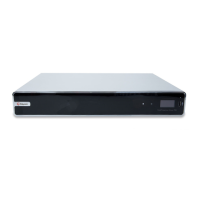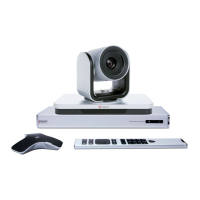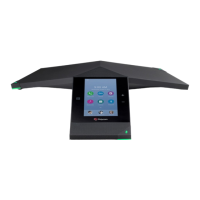Administrator’s Guide for the Polycom RealPresence Group Series Diagnostics, Status, and Utilities
Polycom, Inc. 155
Statistics
Call statistics are displayed in one format when you are in point-to-point calls and another when you are in
multipoint calls.
Point-to-Point Calls
Streams associated with the participant are displayed beneath the participant information. To view more
information about a specific stream, navigate to the desired stream and select More Information.
Multipoint Calls
A list of participants in the call is displayed. Do one of the following:
● To view a participant’s details, select Participants, navigate to the desired participant, and select
More Information. The participants’ active streams are displayed beneath the participant
information. To view more information about a specific stream, navigate to the desired stream and
select More Information.
● To quickly access information about a particular stream or streams associated with a particular user,
navigate to Streams for calls using Advanced Video Coding (AVC) or Participant Streams for calls
using Scalable Video Coding (SVC). Use the Back and Next Participant buttons to navigate to the
participant with the stream or streams you want to view. Navigate to the desired stream and select
More Information.
● To quickly access a list of all active audio, video, and content streams within the call, navigate to
Active Streams (this option is available in SVC calls only). Select the desired stream, and select
More Information.
Web Interface Diagnostics Screens
Most diagnostic information is available in both the web and the local interface, but some of this information
is specific to one or the other interface. Read this section to learn how to find diagnostic information in the
web interface.
Sessions Displays the following information about each session connected to the system:
• Type
• User ID
• Remote Address
Reset System Note: If a room password is configured for the admin account, you must enter it to reset the
system.
Returns the system to its default settings. When you select this setting using the remote
control, you have the option to do the following:
• Keep your system settings (such as system name and network configuration) or restore
system settings.
• Keep or delete the directory stored on the system. System reset does not affect the
global directory.
• Keep or delete all PKI certificates and certificate revocation lists (CRLs).
You might want to download the CDR and CDR archive before you reset the system. Refer
to Call Detail Report (CDR) on page 161.
Diagnostic Screen Description

